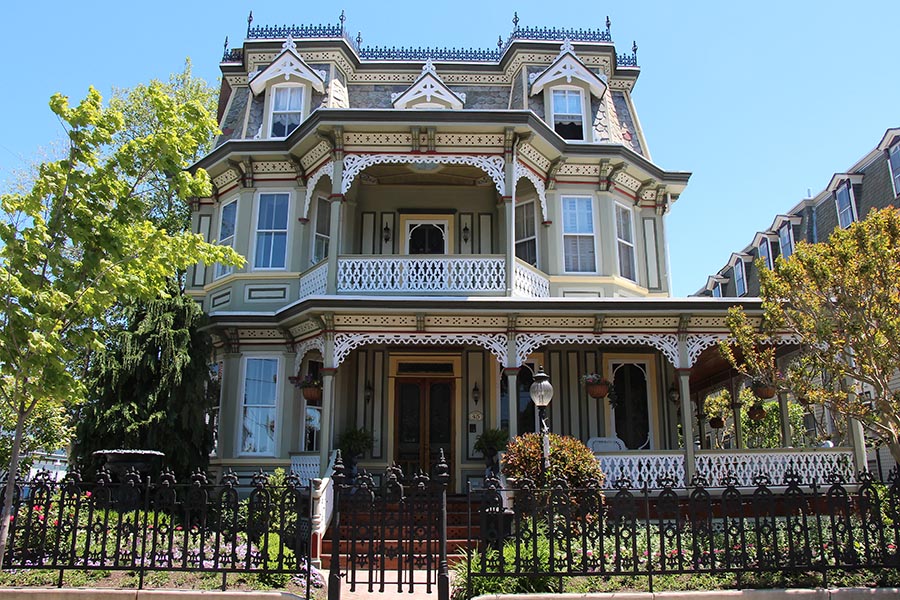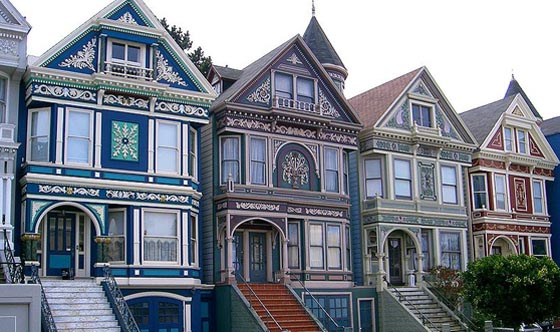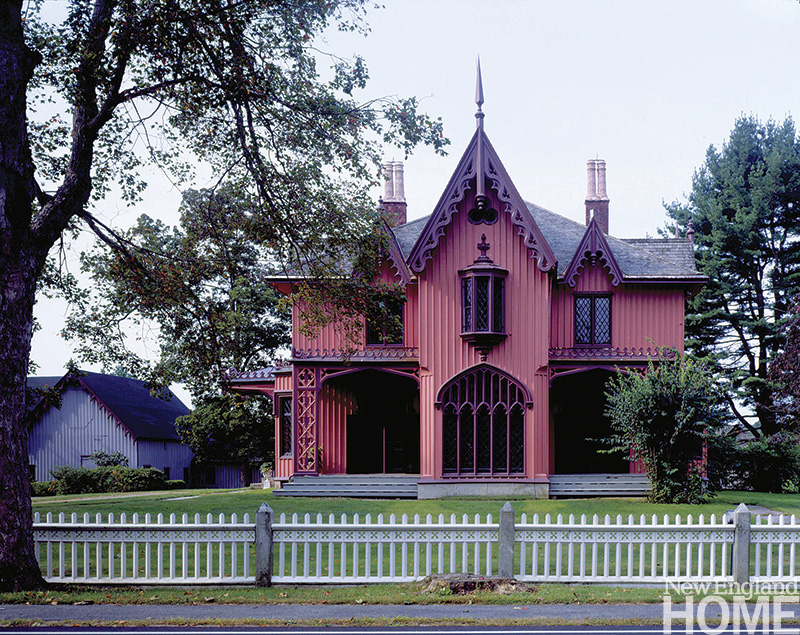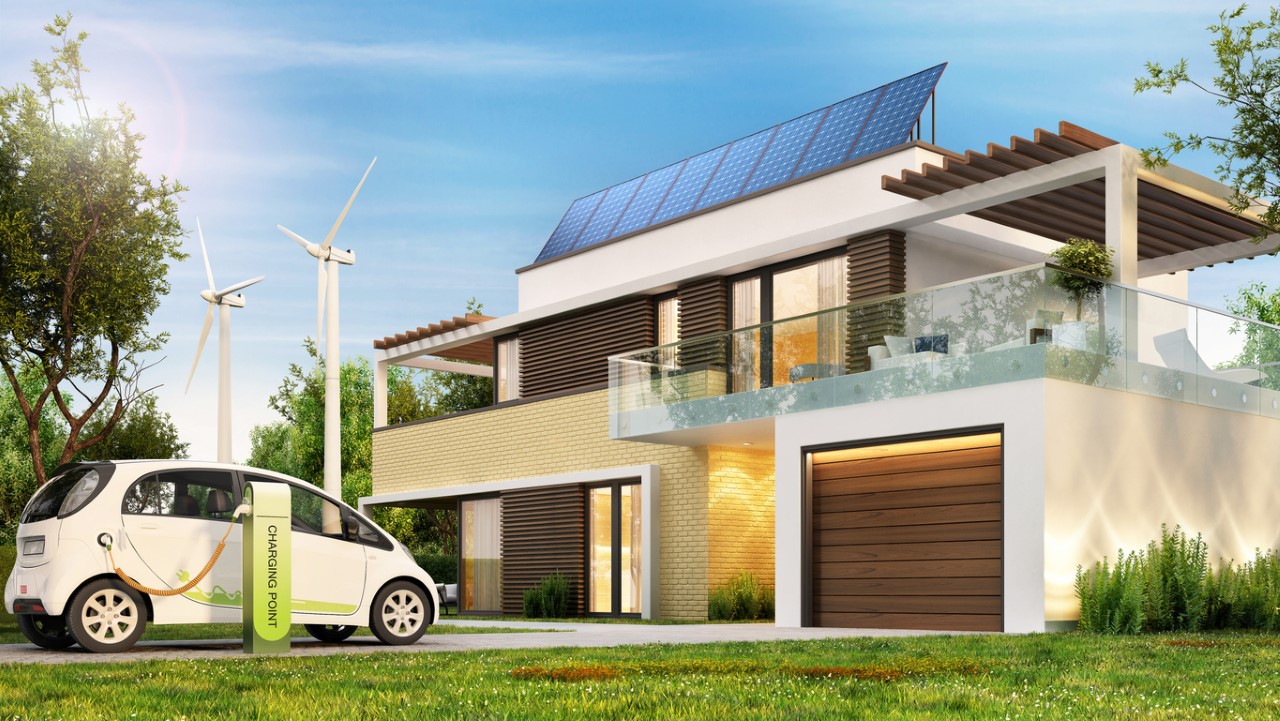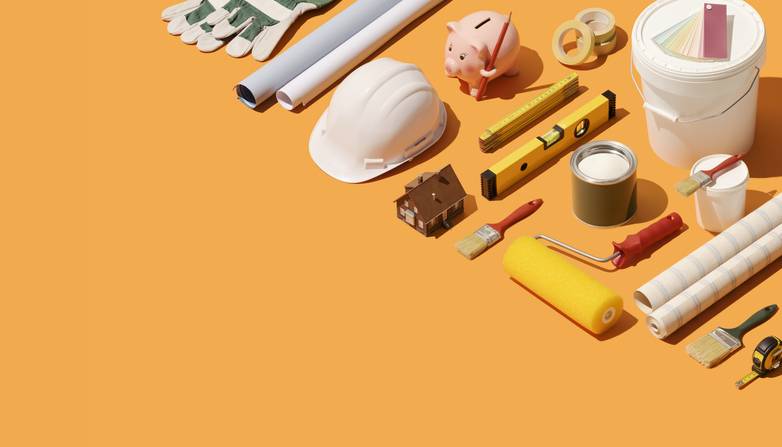Welcome to “What’s That House,” a new series that explains the details and history behind common architectural styles.
Whether you’ve spotted one in Cape May, New Jersey or San Francisco, California, chances are there’s a Victorian home that’s stolen your heart (for children of the ‘80s, the ultimate Victorian just may be the one the Tanner family called home in “Full House”). Even staunch modernists can’t help but be charmed by the exquisite details and incredible craftsmanship that come with these unique homes.
Though the Victorian era was known for being a bit on the repressed side, the homes built in this time are often over the top. It’s important to note that we’re referring to “homes built in this time”: a Victorian home is one that was built during the Victorian era (roughly 1837-1901)—unlike, say, a Tudor home, which is defined by a set of characteristics, rather than a given time period.
Victorian Style From England to the States
Victorian homes in the United States follow a range of styles, and were often influenced by designs in England, Canada, and beyond. England’s Victorian era is when the trend took off, when the years following the Industrial Revolution led to a population boom among both the middle and working classes. The homes built in England during this period ranged from small and cramped to highly stylized and spacious.
Similarly, on American shores, Victorian homes ranged from grand urban properties to humbler, yet still ornate cottages in the middle of nowhere. The information boom of magazines, catalogs and newspapers made it possible for even the most remote households to get a glimpse of what was trendy, and to copy it, allowing Victorian design trends to be spread quickly. New advances in technology also made it easy to reproduce architectural elements cheaply—then sell those elements through the mail. All in all, the Victorian home was the first real “mass” building trend.
Today, we associate Victorian homes with grand, dollhouse-like structures. While there are no strict rules about what qualifies as a Victorian home, there are a few general characteristics to look for in homes of this era.
Common Features of Victorian Homes:
Details On Details On Details
Often known as the delightfully-named “gingerbread” house, Victorian homes will often sport exterior architectural elements in a range of shapes. From well-crafted spindles and brackets to ornate trim, these decorative details made it easy to upgrade Victorian homes so they’d stand out from the neighbors’—and they reflected the talent (and cost) of the fine craftsperson you hired to make them.
Wood, Brick Or Stone Walls
Wood siding features heavily in many surviving Victorian homes, but brick or stone walls are often spotted as well, like in this grand house—which, by the way, is currently up for sale.
Colorful Exterior Paint
Before the Victorian period, homes were drab. White or brown were the only paint options, or you just went with the natural wood, stone or brick that your home was made of. But new advances in manufacturing during the Victorian era made colorful exterior paint relatively affordable—and boy, did the Victorians embrace it as a way to add even more detail to their homes. You’ll often see many shades of exterior paint layered in a single Victorian home.
Popular Styles of the Victorian Period:
Queen Anne
Popular in the final decades of the 1800’s, the Queen Anne style has an asymmetrical exterior, a front gable, towers and, often, a grand porch. The style was also adapted for row houses, which were less detailed than their more expansive cousins.
Gothic Revival
Used for everything from prisons to churches to mansions, this style borrows elements from medieval design. How much the structure reflects its influence was up to the architect or builder. In homes, you’re likely to see pointed arch forms (usually in windows or doors) and steeply-pitched roofs decorated with gingerbread trim. Occasionally, you’ll even spot a spire.
Italianate
As the name suggests, this style borrows from Italy – the 16th century, to be exact. Italianate gets the distinction of being the most popular home style of the mid-1800s, by virtue of its adaptability. The roofs are almost always flat and accented with large-scale brackets. The details focus on windows and doorways. This made it easy to make any home (whether urban or rural) an Italianate. Just add details!
Recently, we featured two bloggers who are in the midst of renovating or restoring Victorian homes. Be sure to check in on the journeys of Vivacious Victorian and Victoria Elizabeth Barnes.
Top Image Credit: Just 1 Step Away
Did you like this post? Read the rest of the What’s That House? series!

